User acquisition is a hot topic, and a successful strategy can immensely help a business scale, opening new revenue channels and bringing your game to the attention of new audiences.
However, some advertisers utilise harmful stereotypes in advertising, both in content and in choosing how to target their creatives. In this guest post, Rovio UA lead Claire Rozain discusses how advertisers can avoid these problems, driving user acquisition in a positive way.
80% of media buyers feel that it’s important that advertising in games should not be disruptive or intrusive to players, with 36% deeming this very important. And yet the gaming market is full of shocking, disruptive, or harmful ads, always seemingly seeking for more clicks. Which begs the question: Are gaming companies hurting their scale and inventory with harmful ads?
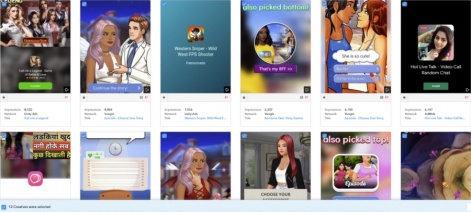
Contextual marketing
Let’s start with one aspect that many companies should have front and centre when planning their ads-to-content mix. Since iOS 14 and the rise of contextual marketing, early funnel KPIs have become an extremely important metric to optimise. Contextual advertising and contextual ML prediction gauge the probability that users will click or play an ad, and will generate the goal set by the advertiser as those metrics will improve the ranking, filtering, placement or pricing of one ad.
Click-through rate algorithms as a learning-to-rank approach is a method used by some ad networks, especially in social media, where the engagement rate is a key indicator for the ranking of each ad. In this context, the sequencing of ads and more specifically dramatic story arc sequencing have risen up as successful tactics to employ.
Creative sequencing for good
I am actually amazed and happy to see some advertisers like Supercell embracing creativity with relevant sequencing ads. Merge Mansion to my mind has absolutely mastered sequencing ads – serving ads that drive an impact – for a few years now.
Meanwhile YouTube has invested plenty of effort to make advertising more memorable and effective using the methodology below :
- Tease Amplify, Echo: Tease your audience with short ads, amplify with long-form, echo to spur action.
- The Mini Series: Break your story into thematic chapters, told over time.
- The Direct Shot: Stick to one concept communicated in different ways.
- The Follow Up : Serve viewers a long-form ad, followed by shorter ads reinforcing the message.
- The Lead In : Engage your audience with a short ad and amplify with a long-form.
This strategy involves allowing multiple ads in different timeframes and inventory sources to deliver a dramatic narrative arc which is available in all the relevant parts of the inventory (TV, in-game ads, social media etc.)
From this perspective, the strategy is usually to use ads in the following ways:
- Broadly. Avoiding targeting specific regions or specific demographics.
- Clearly. Avoiding brand confusion, such as several brands being presented.
- Cleverly. Avoiding seasonal ads, such as specific holidays.
Source : How Sequencing Ads Drive Impact - Findings of Ipsos/Google Advertising
Sequencing Resea by Par Ljungstrom.
Then the ads rotate into several touchpoints.

F: Is a filtered ad. H: Are non-sequenced ads. S: Are sequenced ads.
Some of the key points to bear in mind when building your arc are:
- Stick to your idea. You need to align your creativity to your Game IP core concept.
- Have enough ammo. You need to have inventory to spread your ad and actually build this dramatic arc.
- Be memorable. Have an audience willing to watch your ads long-term.
We really can stress that second point enough here. You need people to be willing to watch your inventory, and you need to avoid being blocked by either other advertisers or annoying consumers to the point that they’ll disengage from your efforts.
The harmful sequencing of ads (see Meta…)
There are of course other ways to attempt to achieve the same goals. One option is to adopt a dramatically different strategy of actively pursuing ‘harmful’ advertising in order to increase engagement. This is most often done by targeting specific small sections of the audience with your story arcs.
This practice is unfortunately not new. Since the internet has existed we have always had harmful advertising, with the immediate result being an increase in the use of adblockers. And if adblocking in mobile games is not possible yet, such harmful content gives consumers a good reason to raise their concerns in court. After all, the second reason why US consumers block ads is : “I want to avoid offensive or irrelevant images/messages” (46%)
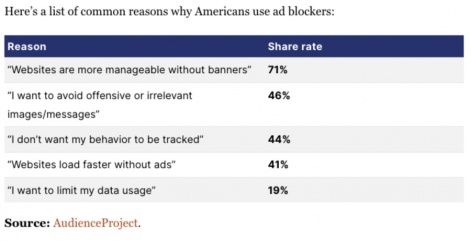
The reality is that some social ad networks are neglecting ad policies and paying a big price as a result. For instance, the Department of Justice announced that it has obtained a settlement agreement resolving allegations that Meta has engaged in discriminatory advertising in violation of the Fair Housing Act (FHA).
These are the key features of the parties’ settlement agreement:
- By Dec. 31, 2022, Meta must stop using an advertising tool for housing ads known as “Special Ad Audience” (previously called “Lookalike Audience”), which relies on an algorithm that, according to the United States, discriminates on the basis of race, sex and other FHA-protected characteristics in identifying which Facebook users will be eligible to receive an ad.
- Meta has until December 2022 to develop a new system for housing ads to address disparities for race, ethnicity and sex between advertisers’ targeted audiences and the group of Facebook users to whom Facebook’s personalisation algorithms actually deliver the ads. If the United States concludes that this new system sufficiently addresses the discriminatory disparities that Meta’s algorithms introduce, then Meta will fully implement the new system by Dec. 31, 2022.
- If the United States concludes that Meta’s changes to its ad delivery system do not adequately address the discriminatory disparities, the settlement agreement will terminate and the United States will litigate its case against Meta in federal court.
- The parties will select an independent, third-party reviewer to investigate and verify on an ongoing basis whether the new system is meeting the compliance standards agreed to by the parties. Under the agreement, Meta must provide the reviewer with any information necessary to verify compliance with those standards. The court will have ultimate authority to resolve disputes over the information that Meta must disclose.
- Meta will not provide any targeting options for housing advertisers that directly describe or relate to FHA-protected characteristics. Under the agreement, Meta must notify the United States if Meta intends to add any targeting options. The court will have authority to resolve any disputes between the parties about proposed new targeting options.
- Meta must pay to the United States a civil penalty of $115,054, the maximum penalty available under the Fair Housing Act.
These moves are meant to change the way advertisers operate in the long run, including moving past the use of harmful strategies.
Ad blocking and brand safety
Ad networks and programmatic channels are seeing an increase in in-game advertising from blocked ads. In order to promote brand safety some mediation partners such as AppLovin launched Brand Safety For Publishers with Ad Review.
According to AppLovin: “The biggest advertisers running ads in your apps could be anyone — a competitor, a clone of your app, or a competing developer testing out a new creative to drive a higher IPM. Each of these scenarios can cause churn.”
Mediation partners aim to facilitate and even monetise solutions, in order to cut traffic for apps seeking new users with harmful content and advertising. The aim is to block those poor quality ads that players are reporting.
Digital Senior Director of Ad Monetisation Kelly Kang at Unity, said:
“We use this feature very often. Every time we receive feedback from users that would warrant a block, or see the need to block certain ads, we use the revenue loss insights from the feature to determine what the revenue impact will be before we decide to block it.”
“We’re also able to escalate ad quality issues quickly now, and as a result we’re blocking less and preserving more revenue while still putting users first.”
Thanks to this offensive ads are blocked by advertisers more and more frequently. Often, in-game advertising is the cheapest way to find high-value users and directly target IAP whales, if they are not excluded from the premium rewarded ad video placement.
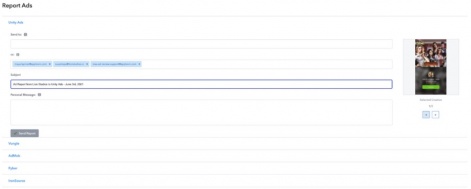
Being blocked by a mediator means that you can not advertise anymore in their games and so it may:
- Reduce your reach
- Make you lose premium inventory
- Lose a touchpoint to reach a valuable audience
- Lose the money you could have earned by converting a user.
- And much more!
What about advertiser sentiment?
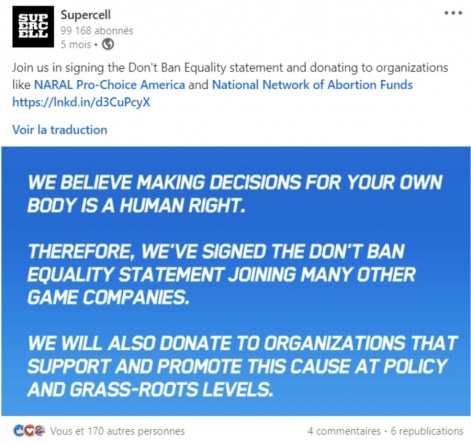
My network is full of IAP purchasers, and I was really curious to get their feedback on an ad from Melsoft that I, personally have been targeted with.
Having diverse opinions is always a chance to improve and learn from each other. I was really interested in receiving feedback about this ad and especially in understanding the larger group’s reaction to brand sentiment.
So… Soon after the abortion law was passed in the US I was targeted by an ad where we have a narrative from Melsoft (whose HQ is based in Lithuania) of a person getting pregnant and announcing it and their partner saying in reaction ‘I divorce’.
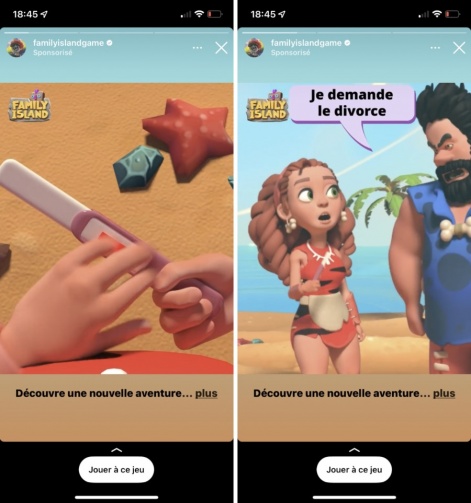
While some companies such as Supercell are open about where they stand regarding ads such as this, some other companies used this as an opportunity to advertise games with a narrative not even related to abortion.
I was really interested to have feedback… And 86% of respondents said that this ad doesn’t respect women.
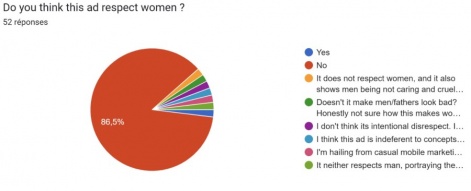
Here are the full results I obtained by asking my network about this ad: Sentiment analysis - 90% negative sentiment generated for the brand.

The word theme from the comments was also quite negative.

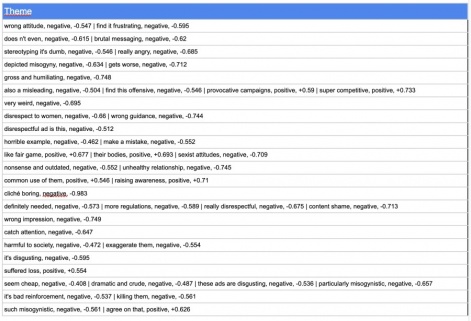
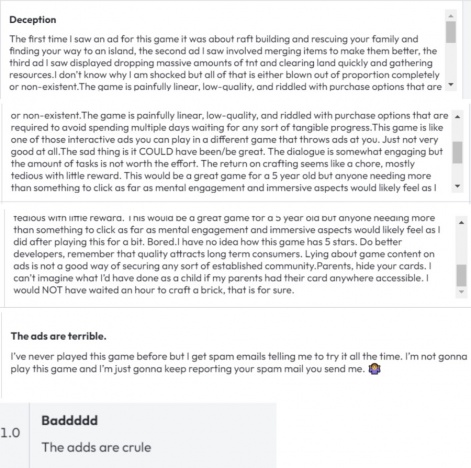
In conclusion
If you have learned one thing in this article it would ideally be that you consider what you do moving forward. We are all crafting our own path but it is never too late to improve and craft a path that is successful without causing harm.
I have learned that going deep is far better than going wide and if people actually took the time to watch their adblock rate or even Facebook's long-term algorithm strategy, I think that they would soon reconsider using ads using harmful stereotypes.
Personally, I trust in the beauty of games and the awesome lead narrative designers, designers, and artists who are crafting games for good. Games are awesome and help people in their day to day. So before looking for the next stereotype, instead consider advertising the real narrative of your game.
To wrap up, I want to thank those who have helped me to write this article either by supporting me or sharing their ad feedback.






















